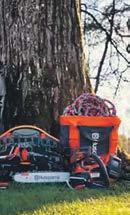

Farewell, Mons Joe
By Mary Anne Gill
Te Awamutu’s Catholic community is in mourning following the death of their much-loved former parish priest, Monsignor Joe Stack.
The 76-year-old monsignor retired to Te Puke last year but regularly returned for mass at St Patrick’s Church and visit prisoners at Waikeria Prison.
Parish Council members said some of his most impactful work was done at the prison. One member noted Stack’s unique ability to blend humour with empathy and compassion endeared him to everyone he met.
Nick Prendergast said Stack would be watching with interest tomorrow (Friday), when a requiem Mass will be held in Te Awamutu.
“His forte was funerals,” he said. “He had a way of combining humour with reverence that made them truly special for families and friends.”
Hamilton Diocese bishop Richard Laurenson told The News Stack had a particular heart for those at the margins.
“Just last week he was visiting Waikeria as part of his ongoing ministry as a priest.
“Mons Joe was never an official prison chaplain, but like many priests, he had a supernatural ability to engage with those who suffer confinement and like many of those priests, it was such a natural part of them that no one really noticed, and they never advertised the fact.”
When Stack missed his regular visit last week, concerned friends raised the alarm. He was later found at his home in Te Puke, having died of natural causes.
“Joe’s love and care for his fellow priests is legendary. His passing has deeply touched many of us,” Laurenson said.
One of his closest friendships was with former Cambridge parish priest Mons Len Danvers.
The two were like brothers, recalled The News senior writer Viv Posselt, who interviewed them for their joint 50th anniversary as priests.
“Once they warmed up, they were very amusing,” she said. “Their banter was easy and familiar — clearly the product of many years of friendship.”
Their resemblance — both with grey beards and receding hairlines —often led to confusion among Waipā parishioners.
Retired Anglican deacon Norris Hall said Stack had been his spiritual leader for many years.
“He was a humble person with a delightful sense of humour and we enjoyed each other’s company.”
With Jewish heritage through his mother, Hall also shared customs with Stack.
“If anyone didn’t get on with Joe, they had a problem.”
Parishioner Betsy Reymer, now in her 90s has seen priests come and go but rated Stack among the best.
“No fancy frills with him. He was always very friendly and remembered people’s names.”




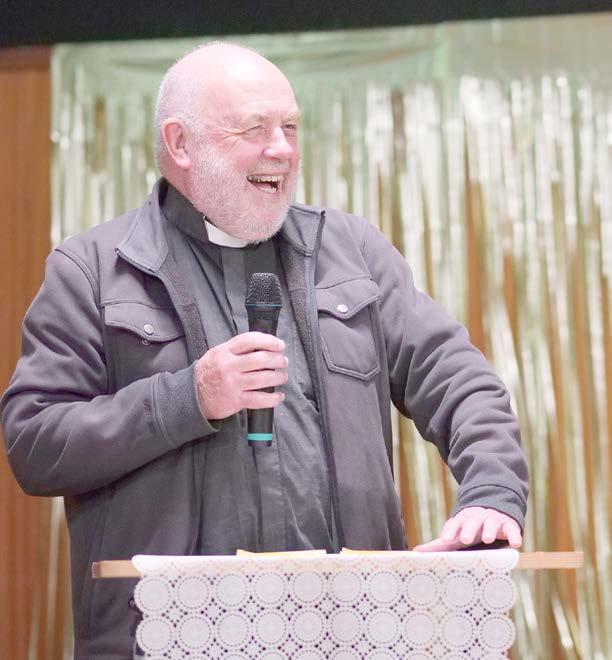





Mons Joe Stack had a great sense of humour as evidenced in Cambridge last year at his friend Leonard Danver’s jubilee celebration.
Photo: Rekord Ltd.

Farewell, Mons Joe
Continued from page1
His sermons were meaningful and always had a strong core message, she said.












Roy
027

editor@goodlocal.nz
maryanne@goodlocal.nz
viv@goodlocal.nz
chris@goodlocal.nz
janine@goodlocal.nz
david@goodlocal.nz
admin@goodlocal.nz
Parish councillor Cass Sutton, who knew Stack during her time as deputy principal at St Patrick’s Catholic School described him as “kind, gentle, non judgemental and always with a twinkle in his eye.”
Prendergast said parish priests play a critical role in families’ lives – from baptism through to burial.
“Joe was always sincere. He would take people as they were and look after them. He’s certainly going to be a loss.”
Words like empathy, sincerity, sense of humour and compassion summed up Stack, he said.
Stack was born in Auckland and ordained a priest in 1974. He was a founding member of the Hamilton Diocese and looked after parishes in Waikato, Bay of Plenty and Tairāwhiti. But it was Te Awamutu where he spent most of his time as a parish priest.
“Joe had a quiet way of encouraging us, and being there whenever we needed him,” said Laurenson.
“Priests live an extroverted life, but most of us are very introverted and private people. We love our space, and our quiet. We spend much time in prayer with the Lord which feeds our ability to be public facing.”
A Vigil Funeral Mass is to be held tonight (Thursday) at St Mary’s in Tauranga with a requiem mass in Te Awamutu tomorrow followed by his burial at the Ōhaupō Catholic Cemetery.

Time extended
The deadline for entries for the 2025 Waikato Business Awards has been extended by one week to July 7.
Fund raisers
Members of the Woolshed Warblers will perform at the Woolshed tomorrow and Saturday to help raise funds for the Te Awamutu Boxing Academy and the Foundation Academy for Singers and Musicians.
Correction
The cost of the Hamilton Airport terminal upgrade is about $7 million, not $75 million as reported in The News last week. The error occurred in the sub editing process and corrected online.
Lions share
Te Awamutu Lions have made $2000 donations to seven community groups this month.They include the health shuttle, Loving Arms group, Isite, Commsafe, Riding for the Disabled, the Wheelchair Wagon and Special Olympics.
Water company
Waikato’s first publicly-owned water company will be called IAWAI Flowing Waters and its three person establishment board chaired by Kevin Lavery with Tim Manukau and Dave Chambers as directors. The company’s shareholders are Hamilton City and Waikato District Councils in partnership with Waikato-Tainui.
A lot of the time on social media when there’s an incident involving the police I see myriad comments from the public about there being no police. For the next few weeks I thought I’d break down the various workgroups based in where I am in Te Awamutu
This week I’m going to talk about the Frontline staff. Public Safety Teams (PST).
The PST staff comprise of five sections with coverage 24 hours a day. They work a roster of two early shifts, two late shifts, two night shifts followed by four days off (including the sleep day).
Typically there are three constables working on a section in Te Awamutu supervised by a sergeant, although this can vary with distractions caused by court duties, training days, leave and backfilling other stations within the Western Waikato area. PST staff are the backbone of the New Zealand Police.
Their role entails attending any emergency job, traffic, historic complaints, burglaries and virtually for any policing activity, they are first on the scene. The attributes required for this role are the ability to adapt and think


on your feet, you can see people at their worst and often have no idea how things are going to pan out. For most people who call 111, PST staff will be the first police they see arrive.
Te Awamutu is lucky in that we receive a few new graduates every year to bolster our numbers and from my point of view it is extremely satisfying seeing new and enthusiastic staff arrive, thrive and grow in the job and then move on to the other workgroups within the police.
A new graduate is known as a Probationary Constable and retains this status for two years while they complete workplace assessment to attain permanent appointment.
Policing for the most part is a very rewarding career. It is exciting, fast paced, a great culture (The people absolutely make it) and I can’t think of anything I would rather be doing (other than an astronaut, or a columnist…)
If you are thinking of a career in policing, I urge you to look for more information.
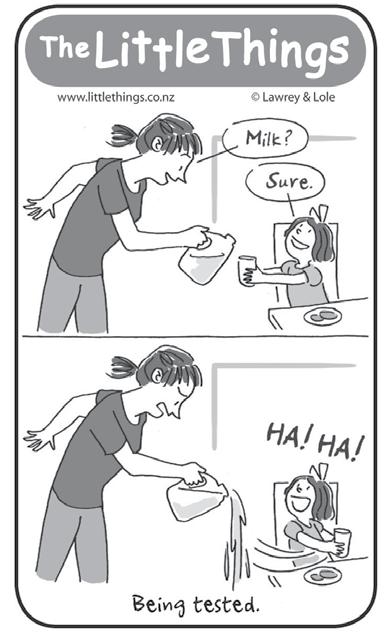


Mons Joe Stack celebrating Mass at Our Lady of the Sacred Heart Church in Ōtorohanga. Photo: Supplied
Briefs…
Plan approved
Waipā District Council’s nine year Long Term Plan was approved last week and will result when adopted in a 15.5 per cent rates increase from July 1 and subsequent years of 10.7, 6.2, 6.8, 4.6 and 2.3 for each of the last four years.
Cambridge Safer Community Charitable Trust’s annual funding went from $20,000 to $40,000 while funds reduced for the Cambridge Water Tower demolition project and Te Ara Wai Museum.
Candidates confirmed
Mike Cater, Ian Hayton and Stuart Hylton have announced they will join Andrew Bydder, Philip Coles, Jo Davies-Colley, Roger Gordon and Hope Spooner as candidates for the four Cambridge ward spots in Waipā District Council. Cater, Hayton, Bydder and Spooner are all part of the Better Waipā ticket which also includes Bernard Westerbaan in Te Awamutu.
Voter change
Māori voters who want to change electoral rolls before the local body elections have until July 10 to make their choice. If you are Māori, you choose the Māori roll or the general roll when you first enrol to vote. After that, you can change rolls at any time except in the three months before an election.
Hassall elected
Cambridge’s Susan Hassall has been elected Waikato University’s new chancellor replacing former governor general Anand Satyanand. She retired as headmaster at Hamilton Boys High School last year but quickly moved into other work, including as acting chief executive of Hospice Waikato until Alex Gordon’s appointment early this year.
Town Hall hit
Vandals painted the historic Cambridge Town Hall’s iconic pillars with “Free Palestine” on Matariki evening. Police nabbed two youths at the scene with what appeared to be spray cans and have referred them to Youth Aid.
Questions on omissions
By Chris Gardner
The chair of the board of inquiry into plans to build a waste to energy plant in Te Awamutu asked the applicant why they had not addressed social effects.
Environment Court Judge Brian Dwyer asked applicant Global Contracting Solutions counsel Bronwyn Carruthers about the omission as the three-week hearing got underway at Waikato Stadium in Hamilton last week.
“You haven’t addressed anywhere in your comments on effects, the matter of social effects which will form quite a bit of the case for a couple of the parties,” Judge Dwyer said. “Is there a reason for that?”
“I am always reluctant to address in submissions a point to be made through cross-examination of a witness in advance, would be the short answer to that, sir,” Carruthers replied.
“Well, I’m quite interested in this aspect. It seems to me looking at it with a degree of simplicity that if the board was convinced to view that the effects of the discharges
were no more than minor, then it can’t be the case that we turn an application down,” he said.
Carruthers agreed.
“Mis-founded, or unfounded feelings about a project don’t provide a basis for declining it, is where you’re coming from,” he said.
The proposal has attracted more than 1000 submissions with the vast majority opposed, including objections from mana whenua, DairyNZ, Fonterra, Te Awamutu-Kihikihi
Community Board and Waipā District Council.
About 64 per cent of submissions expressed concerns about pollutants, including dioxins and nanoparticles, and there were concerns about the lack of a health impact assessment.
Nicholas Manukau and Myles McCauley are sitting alongside Judge Dwyer on the panel.
Global Contracting Solutions director and principal shareholder Craig Tuhoro told the board he had two reasons for making the application.

“One was I don’t like the current toolbox with regards to treatment of waste, and I wanted to create product with that waste, so that product would be energy,” he said.
Environmental Defence Society and Zero Waste Network counsel Dhilum Nightingale had Tuhoro read an excerpt from a 2023 Te Awamutu News article in which he was quoted as saying GMS sends approximately 18,000 tonne of floc, a waste product produced by the scrap metal recycling process, to landfill each year.
“That’s too much,” he said in the article. “So, I began
searching for a solution. That’s how I came across thermal waste conversion, a successfully used process across Europe.”
Tuhoro told the hearing:
“I’m confident that we can get enough material to run this plant. We’re not saying that all material shouldn’t go into landfill. We’re saying that the waste system itself, that this is an important upgrade for the toolkit and we think that this is where the material needs to go.”
Tuhoro said Racecourse Road was one of two Te Awamutu sites his company had considered for the plant.
“The council introduced us to the site, said it was an
Exposing cyberspace danger
By Steph Bell-Jenkins
Cyber safety and risk assessment consultant John Parsons, whose services are in demand around New Zealand, says a significant issue he sees is children lying about their age.
Parsons, who has completed two visits of multiples schools in Waipā recently, said an eight-year-old who lied and said they were 13 years old to access a social media platform such as TikTok, would be exposed to content which assumed they were a teenager.
His comments came as schools across the country deal with increasing and more complex challenges to keeping children safe online.
Parsons worked directly with children and teachers in classrooms and held seven public information
evenings across his two visits.
Goodwood Primary principal David Graham said another problem was the separation between parents and children occurring in the virtual world.
“John made a really good point… we take such good care of our children’s brains – when we put them on a bike they have a helmet, when they jump in a car they have a seatbelt – but when you put them online their brains are at incredible risk of seeing material or connecting with people that’s harmful to their brain, and parents sometimes have no idea of what’s happening in their online life,” Graham said.
He said children in every school were accessing R18 games such as Grand Theft Auto.
“In that game, you can use a car as a weapon to run into people,

you can drown people by holding them underwater – so all of those really horrible adult themes… if you’re an eight or nine-year-old with a developing brain, seeing those images, it can have long-lasting effects on their wellbeing.”
Graham said Parsons recommended children stay off social media until they were at least 16 years old.
He said algorithms were targeting children with products such as pimple cream if they changed their profile picture – which could be a signal they were unhappy about the way they looked.
“When children are bombarded with images of what success looks like, or what the correct body image looks like, it has long-lasting emotional stress on the developing brain.”
industrial zone and would be appropriate for us to develop,” Tuhoro said.
“We made it clear to the people that we were working with we needed to find an industrially zoned site or certain sites. We can’t go putting a facility like this on residential property. We can’t put a facility like this on a farm. This is industrially zoned property. It was for sale. The council took us to the site, so we assumed that the council was considering the community when they took us there.”
Don’t Burn Waipā spokesman Eoin Fitzpatrick said the pressure group was surprised that the hearing is not being held in Te Awamutu.
“I think that they could have found something. I guess they’d taken the easy option for them for a number of factors, but it does make it a little bit inaccessible. We did get a small win in that they are now streaming via zoom - a request we made at one of the initial meetings.
The hearing is expected to end on July 4.

Lobby group Don’t Burn Waipā has been vocal in its opposition in Te Awamutu.
Cyber safety expert John Parsons works with Karāpiro School students during a visit last week.
I really enjoyed being able to spend some time with my Youth MP, Tamorangi recently. We delivered pyjamas to the Maru trust as part of their Be warm, Be healthy campaign.
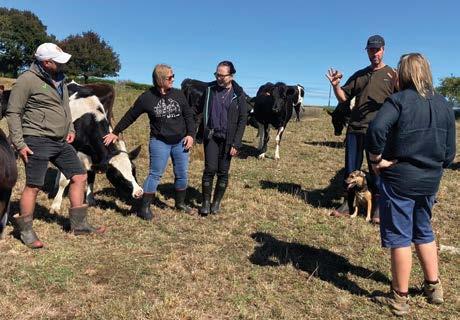
Living icon has big plans

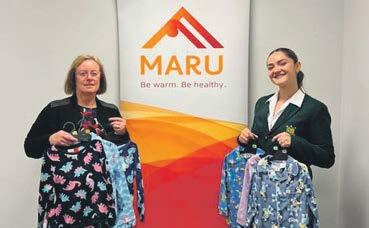
Recently I was delighted to be able welcome Tamorangi onto my team as my Youth MP. Tamorangi represents everything I love about my electorate. Her passion and zest for life is inspiring. She is a credit to her family and will be an influential young person to watch out for. The below was written by Tamarangi in her own words and has not been edited.
Contract Milkers
Deserve Greater Protection
Kia ora, ko Tamorangi taku ingoa. Or some may know me as Amazon. I spent my first early years growing up in Wellington and Paraparaumu, but always knew home was far up the road. When I was six, my mum and I moved home because she wanted me to reconnect back to my roots. Pukenui was my first primary school in Te Kūiti. This was where I met Whaea Aroha, she was my year four and five teacher, but not only did she educate me on literacy and numeracy, she taught me not to take those who I love for granted, and that was something 8-year-old me truly needed to understand. Especially after my 8th birthday discovered my mum had stage four lung cancer.
In 2019, my Mum sadly passed away, and a part of me died. I started having trouble with the teachers at school because I couldn't cope with my feelings. But as time went by, a voice started getting louder, “You can sit here and feel sorry for yourself, or you can make a change”.
Sharemilkers Consultants’ Contract Milkers Experience Survey makes for disturbing reading. The survey, which took place in December 2024, analysed the responses of 276 individuals working in the milking sector, 201 of whom are current contract milkers, equating to 12.8% of the New Zealand total. What those contract milkers told the survey is deeply concerning. 43% of respondents report abusive behaviour from a farm owner. 72.7% reported having had a contract milking experience that caused a mental and/or financial setback, including withheld payments. 82.5% of respondents reported this impacted their family situation or relationships, and 38.4% said they stayed in this situation because they were worried about where they would live if they left.
Why is this? Is this some hidden issue? Some deep malaise that the industry is too frightened to talk about? Is it that respondents are often in remote situations and feel alone, isolated and vulnerable? If so, this survey has done the milking industry a great service in bringing this issue to light and should be applauded for that.
In 2021, I moved to Te Wharekura ō Maniapoto with the support of my Aunty Doris, who took me under her care to start my journey of Te Reo Māori. In my first year, I spoke rarely because I was whakamā of not knowing, whilst I was in a class full of students who did know. But I now know it’s okay not knowing, but it’s not okay not to ask. After growing confidence in my Reo, I started speaking amongst my teachers and peers, but my confidence as a human started shrinking. I stopped attending school for three terms. During those three terms, I desperately wanted to leave school and take a course, but that voice came back and said, “School is temporary, the knowledge is everlasting,” so I decided to move to TKHS. It was scary coming back to mainstream, fearing I couldn’t fit back in academically. I thought the pākeha teachers were always working against me, but truly, it was my mind working against my better self.
But I want to know more. I’ll be working with the lead author of the survey, Louise Gibson, to try to get to the core of the issue. Once there, I’ll see what scope the Government, through Law, has to improve the legal protection of contract milkers. They deserve it—just about every employee sector has substantial legal protection and welfare agencies looking after their interests—contract milkers should have the same.

By Chris Gardner
Waikato-Maniapoto’s Te Taka Keegan says he was surprised at being named a living icon for his work weaving Te Reo Māori into technology.
created te reo versions of the Windows operating system and Office productivity suite now called Microsoft 365.
After realizing the teachers of TKHS were here to help provide tools for my future, I grew a need to work towards it. I am now a proud student of TKHS who has successfully achieved all my NCEA levels on merits and excellence and am currently trying my hardest to put myself out there to shape a future full of opportunities and possibilities. As young as I am, I’ve grown a passion towards helping youth believe they can succeed no matter their background. I am also enthusiastic about Broadway Media and travelling the world to learn about different cultures. By coming out of this experience, I hope to have a deep understanding of leadership and a growth in confidence towards being able to speak about important issues in professional spaces. The main thing I'd like to achieve out of this campaign is hope in my peers that they can make the same achievements, no matter where or when you start. As long as you start somewhere.
In the interim, what can we do? Well, Farm Advisors—and most farms have access to them—may be one source of help. Another is an approach to the Rural Support Trust (0800 787 254) which is set up explicitly to look after those working in the retail sector. Sadly, the survey indicated that less than a quarter of respondents had used this service. It’s there, please use it. I encourage each of you to collaborate with the relevant authorities to pave the way for substantial reform. Together, let’s ensure that no contract milker feels isolated or vulnerable again. The time for change is now. If you are affected by this issue and would like to read the survey in full, feel free to contact my office, Kuriger.Inglewood@Parliament.govt.nz, and I’ll send you a copy.


Keegan, a University of Waikato Department of Software Engineering associate professor who lives in Ngāhinapōuri with his wife Ari, has worked with both Microsoft and Google on several hardware and software projects and is codirector of the university’s Artificial Intelligence (AI) Institute Māori.
Te Hapori Matihiko, a global community for Māori working in the digital and technology industries, recognised a lifetime achievement in service to Māori and the digital tech sector by presenting Keegan, also Associate Dean of Māori, with the Living Icon award in Christchurch.
In 2009, Keegan spent six months at Google’s headquarters in Mountain View, California as a visiting scientist where he helped integrate te reo Māori into the Google Translator Toolkit laying the groundwork for its inclusion in Google Translate.
His role was cultural as well as technical, ensuring the translation tools respected the nuances of te reo, empowering Māori speakers to use digital tools in their own language.
He has also been involved in ensuring a te reo Māori newspaper collection of 180,000 pages from the 1830s to the 1940s is available via Google search.
converse in te reo Māori very well, but these tools are built on data where consent wasn’t given for AI use. Consequently, it is a breach of Māori Data Sovereignty, and a significant misappropriation of a Māori language data. But opportunities exist say Te Taka, where authorised Māori language data can be used to build sovereign AI systems that have complete iwi Māori autonomy. That’s where I want to concentrate my efforts over the next few years, working with organisations like Te Kāhui Raraunga and Te Whare Wānanga o Waikato, to build intelligent knowledge systems that encompass mana motuhake, for the benefit of future generations.”
Inglewood Office 80 Rata St, PO Box 124, Inglewood 06 756 6032 • Kuriger.Inglewood@parliament.govt.nz
Te Awamutu Office 196 Alexandra Street, Te Awamutu 07 870 1005 • Kuriger.Teawamutu@parliament.govt.nz
King Country Virtual Office 021 815 017 Kuriger.Kingcountry@parliament.govt.nz






“I was a little bit surprised,” Keegan told The News after receiving the award.
He felt there were other people in the room more deserving of the organisation’s top award
“I did not prepare a speech,” he said.
Keegan, 59, who is also of Ngāti Porou and Ngāti Whakaue descent, worked with Microsoft from 2000 to 2004 enable computer keyboards to produce the special markings needed in typing te reo Māori and joined a Microsoft team that
Keegan received the University of Waikato’s Māori/Indigenous Excellence Award for Research in 2013 and Prime Minister Bill English’s Supreme Award in 2017 for weaving his love for te reo Māori with computers.
Keegan may have won a lifetime achievement award, but he has much more he wishes to achieve.
“With the recent advancements in Artificial Intelligence, numerous opportunities are arising where these new technologies can support indigenous languages and in particular, te reo Māori,” he said.
“Some of the latest AI
Waikato software specialist Company-X cofounder David Hallett said he had always admired how Keegan has brought together deep cultural knowledge and technical skill.
“In an industry that often races ahead, he’s managed to ground progress in something meaningful: our language, our stories.
“His work hasn’t just opened doors for te reo Māori in tech, it’s also influenced the way many of us think about what meaningful innovation actually looks like.”
Te Awamutu based Te Wananga o Aotearoa chief executive Evie O’Brien said Keegan’s work looked really interesting.
Te Hapori Matihiko Living Icon award winner Te Taka Keegan says he has more work to in the Māori data sovereignty field.
Two for Ashlee
By Kevin Robertson
Te Awamutu apprentice
jockey Ashlee Strawbridge gained her first victory at Cambridge last week and didn’t take long to make it two when she guided What A Charma to success in the Seeka Kiwifruit Cup (2100m) at Tauranga on Saturday.
In a race filled with drama where Bruno Queiroz –riding eventual runner-up Gallant Hero – lost the use of his irons for the majority of the contest, Strawbridge was happy to bide her time aboard the Mark Irwintrained runner at the back of the seven-horse field.
What A Charma edged past Gallant Hero and the third-placed King Khan in the shadows of the post to capture his third career victory.
Strawbridge, the daughter of former top jumps jockey Michelle Strawbridge (nee Hopkins), was thrilled to get win number two aboard one of her favourite horses.
“It was good as I didn’t plan on being that far back but he settled here nicely early on,” Strawbridge said. “He is a horse that will just try and try and try, no matter where you put him.
“That is what got him home today. He just relishes

the wet ground.
“I was quite confident and hoping for the best as I knew how he is. When he comes around the bend, he gives it his all, and that’s what it takes to be a nice horse.”
Earlier in the week
Strawbridge, who is indentured to Te Awamutu trainer Debbie Sweeney, won on the Cambridge-trained Cheap Sav biding her time at the rear of the field in the Saddlery Warehouse 1300 before unleashing her charge out wide to run over the top of her rivals.
“That was awesome,” Strawbridge said. “Mum was here and I could hear them all cheering when I trotted back in, so that was awesome to have them all here supporting me.”

“I started riding for Debbie (Sweeney) around high school. I went down to Christchurch and rode for Ross Beckett when I went down for university, but uni wasn’t for me, so I found out more about doing an apprenticeship and moved back home and got started with Debbie.
“Mum works for Debbie as well, it’s an awesome work environment, it’s like one big family.”
Strawbridge had come close to victory in several of her 30-odd starts before the breakthrough win, and she said she is relieved to finally be on the board.
“I have had a few placings now, so it is good to finally get the monkey off the back,” she said. - Loverracing



















Fujitsu Lifestyle Hi-Wall Heat Pump
Model ASTG09KMTC

Fujitsu Classic Compact Hi-Wall
Premier Heat Pump
Model ASTG18LVCC
Compact, functional with

Fujitsu Lifestyle Hi-Wall Heat Pump
Fujitsu Lifestyle Hi-Wall Heat Pump Model ASTG24KMTC






Ashlee Strawbridge returns to scale at Cambridge Synthetic. Photo: Kenton Wright
TREES AND POWERLINES
EVERYTHING YOU NEED TO KNOW TO KEEP YOU SAFE.
Managing your trees will help prevent power outages and keep everyone safe. Check your trees regularly and keep them trimmed so they stay clear of power lines.
TREE TRIMMING DANGERS
Trimming trees near power lines can be extremely dangerous, and even deadly.
Contact with a power line can cause:
• Injury or death to yourself, family, community members or livestock
• Damage to property
• Damage to power supply facilities and electrical appliances
• Damage to third parties.
Before attempting to clear tree foliage near live conductors you should contact us for advice.
Branch movement: Although tree foliage can sometimes appear to be at a safe distance from the lines, once you begin the work, the tree may move due to pressure placed on branches, random gusts of wind and other external factors. Be aware of any tree branches that may flick up as they are trimmed or as surrounding branches are cleared.
Wet weather: Branches often hang lower when the leaves are wet, so if it starts to rain, or if the leaves are already wet you should expect some movement. Debris: Ensure there is clear space to allow for debris when tree trimming.
Growth Limit Zone: any tree growing in the Growth Limit Zone (see diagram) must be trimmed by a Waipā Networks authorised arborist.
ELECTRICITY REGULATIONS
The Electricity (Hazards from Trees) Regulations 2003 set out the responsibilities of tree owners and lines companies in relation to trees and power lines. Waipā Networks has developed procedures to meet these regulations, summarised below:
• If we become aware of a tree that you are responsible for within the Notice Zone, you may be issued with a Hazard Warning Notice.
• If we become aware of a tree you are responsible for within the Growth Limit Zone, you will be issued with a Cut or Trim Notice.
• You must have the tree trimmed so that it no longer encroaches the Notice Zone or Growth Limit Zone. Dispensation can be applied for if there is a valid reason for the tree to be allowed to grow within the Notice or Growth Limit Zones.
• We’ll trim a tree free of charge provided it is the first trim. Any further trimming is the responsibility of the owner.
• At any stage, you can declare ‘No Interest’ in a tree on our network and we will meet the costs of any future trimming, or may decide to remove the tree altogether.
• Where we become aware of a tree close to the lines and likely to cause danger to the public or property we have the ability to remove the tree or branch causing the hazard.
If you receive a ‘Cut or Trim Notice’ you must use an approved Utility Arborist to trim or fell the trees. If you repeatedly ignore them, you could be fined up to $10,000 plus $500 per day for every day the offence continues.
THERE ARE RULES ABOUT SAFE DISTANCES BETWEEN TREES AND POWER LINES In the Zone
In October 2024, The Electricity (Hazards from Trees) Regulations 2003 were updated to increase the minimum safe distances between trees and power lines, and a new ‘clear to the sky’ requirement for some trees.
The regulations define four zones:
Growth Limit Zone: This is the minimum distance that trees must be kept clear of overhead power lines.
Cut-Back Zone: This zone ensures vegetation is trimmed back far enough to prevent it from quickly growing into the Growth Limit Zone.
Notice Zone: We will issue a notice if vegetation is in this zone to give property owners time to address the risk earlier before it becomes urgent.
Clear to the Sky: This is the area above 33kv and high voltage lines that must be kept clear.
Fall Hazard Zone: Trees present a hazard if they fall and damage power lines. A tree’s fall hazard zone is the height of the tree plus 4 meters.
Note: Fall Zone trees are not currently covered by regulatory requirements. But if you own a tree that is within the fall zone and you have concerns about its health or safety, please notify us to discuss your options.
What are the Minimum Safe Distances?
The size of the growth limit zone varies depending on voltage level:
The Notice and Growth Limit Zone requirements increase if the adjacent power line span is greater than 150m. In these cases, we will notify you of your obligations.
For further information contact our Vegetation Team 07 872 0745 or trees@waipānetworks.co.nz
Bish: a man with the X-factor
By Viv Posselt
On Monday afternoon, John Bishop’s son Richard prefaced the story of his dad’s life by saying it contained almost every element of the Wilbur Smith novels John enjoyed – rich with romance, adventure and exploration.
Speaking at John’s farewell at the Don Rowlands Centre overlooking Lake Karāpiro, he said: “He loved a good book, and Wilbur Smith was a favourite. He wrote almost 50 novels … on every birthday for years, we’d give dad another Wilbur Smith.”
John Bishop’s eight decades were celebrated on Monday. Many there had lives that intersected with his, either through work, community links, local body politics, his love of boats or his ‘hopeless’ fishing ability.
They heard about his early years in England, escapades with a much-loved and ‘devilish’ younger brother William, travels with parents to exotic places, the boys’ penchant for collecting tin soldiers and his love of things ‘Wild West’.
The family came to New Zealand and settled in Christchurch. John, who had picked up a love for horses during the family’s travels, first worked as a shepherd on a country station but soon decided education was what was needed and did a diploma in agriculture at university. He met and married

his first wife Alison in Palmerston North, then his work took them to New Plymouth.
John’s career saw him crisscross the globe, more than 30 years of it working for chemicals manufacturer Ivon Watkins-Dow, working out of Hong Kong, Pakistan, Australia and New Zealand. He settled in Cambridge following Alison’s death in late 1999. He had retired by then but, true to form, didn’t take well
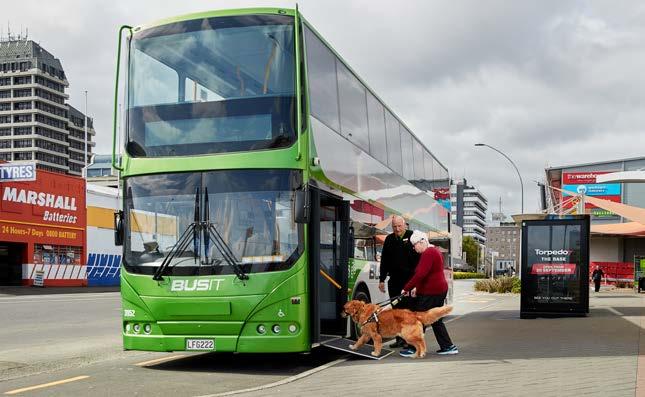
to slowing down, so became a Rotarian, enjoyed farming, met his partner Anne and enjoyed travelling again, and found success and joy in breeding and racing thoroughbreds on his Maungatautari property. He joined Cambridge Rotary in August 2001, became a Paul Harris Fellow in 2012 and took the reins as president in 2022/23. He was known there as ‘Bish’, admired for his wise counsel, clear thinking
and ability to think on his feet.
In 2004, John’s career in local body politics began with his election to the Cambridge Community Board. Deputy mayor Liz Stolwyk said he chaired the Board in 2010, giving ‘generously of time and humour’ until 2013. He chaired the parks and reserves committee, the Light-Up committee, and the Le Quesnoy sister town committee. He joined Waipā District Council


in 2013, chairing the strategic planning and policy committee – one of his first projects was the Cambridge swimming pool. John almost retired from local politics in 2016, but a last-minute vacancy arose on the Cambridge Community Board and he stepped forward, thereby saving a costly by-election and serving another three years.
“Many of us believe John had the ‘X’ factor,” she said. “He was an incredibly smart man, he led by example, humour and style.”
Steve Till of Windsor Park Stud knew John for over 25 years and said he had a real passion for horses. “He loved the research, creating genetic backgrounds behind breeding thoroughbreds and on through to racing them.”
The restoration of wetlands was another passion. John became a Board member of Ducks Unlimited NZ in 1995. He resigned the following year when he went to Pakistan, but returned to the Board in 2006, acting as treasurer until his death. He was also a founding member of the Friends of Resthaven Cambridge Foundation where he was known for his work ethic and for being ‘one of the good buggers’.
John was known for his wit and humour, his devotion to family, his love of horses and the wise advice he dished out at length to all and sundry.




John Bishop, right, pictured with Alan Wellington, Laurie Graham and Julie Epps, was delighted with how the first Friends of Resthaven Foundation art sale fundraiser went earlier this month.
Photo: Viv Posselt



Waipa Workingmens Club
JOIN NOW FOR MEMBERSHIP
ON SHAKY GROUND
Indonesia, land of volcanoes
By Janine Krippner
Every now and then, an eruption in Indonesia captures global headlines—and for good reason. One of the most recent is Lewotobi Laki-laki, but it won’t be long before another volcano makes the news.
Indonesia has one of the highest numbers of active volcanoes—defined as those that have erupted within the past 12,000 years and are therefore likely to erupt again. According to the Global Volcanism Program (GVP, where I used to work), Indonesia ranks fourth globally, behind the United States, Japan, and Russia, with 108 active volcanoes. I recommend exploring the GVP website with numerous eruption descriptions and photographs.
The Indonesian archipelago is a nation of islands —13,558, according to a 2022 satellitebased study. This region is shaped by the Sunda Arc, a subduction zone where the Indo-Australian tectonic plate dives beneath the Eurasian plate. As the plate subducts, it undergoes intense pressure and heating, which releases water into the overlying mantle. This lowers the melting point of the hot rock, generating magma.
This “magma kitchen” fuels the country’s abundant volcanic activity. But Indonesia’s geological hazards don’t stop there. Its tectonic setting also brings frequent earthquakes—and, as we saw on Boxing Day 2004, tsunamis. Landslides, floods, and severe weather events are common, too.
volcanically active nation brings both beauty and risk.

While many small eruptions occur regularly, larger ones are not uncommon. These can produce high ash plumes, deadly pyroclastic flows, and—when eruption deposits combine with rainfall—dangerous lahars. Visitors should always check for exclusion zones and follow local guidance. Indonesia has produced some of the world’s most significant eruptions. The 1883 eruption of Krakatau (often misspelled as Krakatoa) and its resulting tsunami is one such example, as well as the more recent collapse of the cone and tsunami in 2018. The colossal eruption of Toba around 75,000 years ago is another. Tambora produced one of the world’s largest historical eruptions in 1815, with the right conditions to impact the climate and cause “The year without summer”.
Many eruptions have tragically resulted in fatalities, brutally changing the lives of the nearby inhabitants—and, unfortunately, this will likely happen again.
Indonesian volcanoes have even shaped my own life. The 2017 unrest and eruption at Mount Agung catapulted me into science and crisis communication, eventually leading to this very newspaper column.
Club Facilities and Member Benefits
• Plenty of o street parking
• Plenty of off street parking
• Courtesy Van
• Rafters Restaurant
• Delicious Food By Rafters
• Covered outdoor dining area
• Members Draw Nights
People often ask why locals don’t “just” move away from the volcanoes. But with hazards widespread and options limited—not to mention the cultural, spiritual, economic, and personal ties to place—the answer isn’t so simple. It deserves compassion, not judgment.
• Full TAB Ser vice
• Full TAB Service
• Meat Raffles
• Gaming Lounge
• Gaming Lounge
• Venue Hire at discounted rates
Volcanoes also help shape the islands’ rich ecosystems, fertile soils, stunning landscapes, and tourism opportunities. Living in a
If you’re planning to visit, it’s essential to rely on accurate, trusted information. I’ve seen firsthand how misleading clickbait headlines can distort the facts. A good place to start is the ‘Magma Indonesia’ website, run by local experts and the country’s official monitoring agency. Volcanic ash-related flight disruptions aren’t uncommon in the region, so be sure your travel insurance covers such events.
• Pool and Snooker Tables
• Pool and Snooker Tables
• Covered outdoor dining area
• Dartboards
• Dartboards
• Courtesy Van
• Range of Social and sports groups available
FAITH IN WAIPĀ
• Members Draw Nights
• Kids Zone with gaming consoles and foosball table
• Live Entertainment
• Meat Ra es











• Best place to watch sport
• Venue Hire at discounted rates
Why did I do it?
Phil Strong, Senior Leader, Zion
• Multi areas to view sports channels at once
• Range of Social and sports groups available



1pm – 10pm
1pm – 8pm
1pm – 11pm
Why would someone leave a job they love, working with people they love, and move into a space of uncertainty?
Well, dear reader, as you may have read in The News, that is what I’ve recently done. But why?
For the last 10 years I have committed my life to serving the church family at Zion while engaging in the Waipa community to provide ideas and solutions that lift people into a place of hope.
Not every crazy idea I have makes it to execution, and not all succeed. But there is plenty of evidence to say we’ve had fun trying.
Earlier this year I felt that my season leading Zion had come to an end. There was no drama (or melodrama), no moral failure or legal discrepancy, and no fallout. Just a realisation that some assignments are for a season.
When we announced this change to the church family there was a level of shock in the room as none of us had seen this coming. After all, life is going well and we’re seeing some amazing things happen in people’s lives. So why make this decision?
Friends, it comes down to obedience. As a person who has publicly dedicated my life to serving God and others, I’ve predetermined that my answer is “Yes” as I wait to hear the question God would ask of my life.
My study of the life of Jesus leads me to declare “My life is not my own” as I do my best to live in the shadow of His example. To confess to having faith is to accept being led by another to whom one ascribes faith.
That’s a complicated way of saying; faith
is proven by the evidence of submission.

Or even simpler; Jesus is Lord. A W Tozer famously said; “Either Jesus is Lord of all, or He is not Lord at all.”
As someone who runs toward change, I must say I’m a little excited at the prospect of a new assignment. Even in the absence of clarity, I can still walk with confidence. How?
Again, friends, faith is the evidence of things hoped for.
As I believe I am being led by God, Whom I trust as my Heavenly Father, my confidence is in His character, not my circumstances.
For as much as God loves and feeds the birds of the air, so, too, will He take care of my needs and my success. My responsibility is my response to Him. His responsibility remains His.
James, the half-brother of Jesus, writes; “You believe in God? Even the demons believe that and tremble!” He then concludes his thought with; “As the body without the spirit is dead, so faith without deeds is dead.”
The point is this: belief is not of substance unless it leads to the right action. And so, I choose to follow God in faith, trusting every step to Him, confident that He who has begun a good work in my life will carry it to completion.
I am hoping to continue to serve this region and come up with more crazy ideas that help people find hope, strength and purpose. Watch this space!

paupers
By Meghan Hawkes
Dennis ‘Denny’ Horrigan was put to bed at Waikato Hospital after he was admitted on the advice of Constable Carroll in midDecember 1896.
The 60-year-old from Kihikihi was in great pain and suffering from dropsy (oedema). After waiting and not seeing a doctor, the old man got out of bed and left. The Waikato Hospital Board considered he had “cleared out irregularly”. He now came under Section 129 of the bylaws which provided for insubordination. It was decided that he be admitted to the hospital again if the doctor considered him a fit subject, if not, he be admitted to the Old Men’s Refuge which adjoined the hospital.
Denny was a shoemaker who had lived in Kihikihi for many years and was an old Waikato identity. He was known as a good cobbler, whose skill once required him to testify at an inquest identifying the boots of a drowned man as a pair he had made. But Denny had
very intemperate habits and a rough style of living which affected his health and now he needed care.
By the end of the 1800s New Zealand’s settler population was ageing and there were growing calls for welfare services for the elderly. The aged were expected to provide for themselves or be supported by their families. Grudging assistance could be had from Charitable Aid Boards who managed food rations, hospital treatment and medicine. Men were more of a problem than women – there were many male immigrants who never married and had no support.
In 1888 plans were made for a new Waikato Hospital, a fever hospital and an Old Men’s Refuge. The Refuge would contain six bedrooms with two beds in each room, a living room, kitchen and lavatory. Over the years there were calls for it to be enlarged, the applications were so numerous.
Denny was again admitted to hospital at the end of December and died a

few days into the New Year. He was likely buried at Kihikihi, as a pauper, in an unmarked grave. It was the fate of many from refuges. Three years earlier Robert Panton, 72, died at Waikato’s Old Men’s Refuge at 8am, had an inquest held over him at 11am and was buried the same afternoon at 4pm. Not a single mourner followed the hearse to the grave. “Rattle his bones over the stones, he’s only a pauper whom nobody owns,” quoted the New Zealand Herald from the song ‘The Pauper’s Drive’ by Thomas Noel. The song ends “Bear softly his bones over the stones, though a pauper, he’s one whom his Maker yet owns.”
Denny at least had friends, the Waikato Argus commenting “Denny never, I believe, made an enemy of anyone, and though his sphere was a humble one, he will be much missed by many.”

WEEKLY ADVERTISING DEADLINES
Booking & copy setting
Noon Friday of week prior to Thursday publication
Finished artwork 11am Tuesday prior to Thursday publication
Booking & copy setting 5pm Monday prior to Thursday publication
AGE OF REASON
A salute to Fieldays
By Peter Carr
As a past president of the National Fieldays Society - and still a loyal volunteer - I continue to take a great interest in the organisation’s success.
Having been suggested by the late John Kneebone in 1966 and created as a reality only two years later, the organisation has gone from strength to strength over 55 renditions of the agriculturally themed midwinter demonstration of commercial and social success.
It was only halted in its stride once due to the onset of Covid.
The 1400-or-so sites were almost at capacity two weeks ago. That well in excess of 100,000 people care to pay and turn up is a success in itself. But what was originally planned to be a twinning of town and country has now morphed in something much wider.
From the simple flag raising in the predawn chill of the first day to the moment when the gates closed four days later the large area - much of it under canvas - was a sea of eager faces (old and young) all seeking something new and exciting.
While the (dairy) farmers kept their purse strings fairly tight, even after a very good year, it behoves us all to recall that much of their industry takes place under an umbrella of debt – which has to be repaid.
If their reticence to spend big on a shiny new tractor is understandable even more important is their need to reduce their reliance on the well profiting banks.
Important too is the swing, over recent years, towards a degree of education targeting both life on the farm and education of emerging adults in the shape of school-age children.

Much is shown and explained in the area aligned to health, some of this initiative being driven a few years ago by the growing spectre of remote farm-based suicides.
Technology too has emerged as a most useful tool with the electronic chip-provided wristbands aimed at exciting attendees at the gate to hope to win the 110,000-to-1 chance of the keys to a brand-new utility vehicle. But there is a counter side for the exhibitors too who, if they participate, are able to identify and follow up those who have visited their sites during the four days. A win-win all round.
For the 150 volunteers – many of them with decades of Fieldays experience - their 6am breakfast cooked under the eye of the current president kick-starts their often 12 hour stint in the crisp mid-winter air. This year they were met by an over-abundance of rain.
That said, the inclement weather did not deter the continual stream of the public through the gates. One of the more recent initiatives aimed at reducing carbon-related use of the roads has been the advent of a Fieldays Society supply of buses linking the Mystery Creek site with Te Awamutu, Cambridge and Hamilton.
Longevity and loyalty are by-words of the society. Interestingly, the four past presidents who raised the organisation’s flag on that dark morning had a combined hands-on involvement with Fieldays amounting to 146 years. And they will all be back - along with their equally hard-working compatriots - for more of the same in June next year.
Local elections are this October. This is your chance to stand for district or regional council and represent your community. If you are passionate about your community, and want to make a difference, make your stand.
NOMINATIONS OPEN Friday, 4 July NOMINATIONS CLOSE 12 noon on Friday, 1 August
To find out more visit: waikatoregion.govt.nz/elections


BREWED FOR WINTER COMFORT.


Book a private tour of our friendly community.
Arvida Whai Mauri Ora, 319 Manaia Road (off Frontier Road), Te Awamutu.
With 31 acres of gorgeous grounds, Arvida’s Whai Mauri Ora in Te Awamutu will have you walking in a winter wonderland this season.
Now’s the perfect time to book a private tour of our spacious villas and facilities, as you explore a retirement filled with comfort, community and charm.
These openings won’t last long, so book your private tour today and secure your spot.
Call Juliet on 07 444 4023 or find out more at arvida.co.nz/whaimauriora
Library memories celebrated
By Steph Bell-Jenkins
Cambridge High School library manager Glenys Bichan was delighted to have “school icon” Gail Troughton along at a public open day last week to celebrate the first major upgrade to the library in 20 years.
Troughton and her husband Allen, who have been together 69 years, lived in Cambridge for 70 years before moving to Te Awamutu in 2013.
Troughton started at Cambridge High School in 1956 and met her husband of 62 years, Allen, there. Their three children, Ian, Ross and Janeen all attended the school.
Troughton was the first woman elected to Cambridge High School’s board, where she served for 12 years, eventually becoming its first female chairperson.
She also served 12 years on the Cambridge High School Educational Trust.
“I just love being invited back to things at the school,” she said.
“They always take priority over anything else I’m doing at the time because I do value it so much. I have

an utter sense of belonging here.”
She said she had “total admiration” for Bichan, who has been working for several years to upgrade the school library.
“She has worked so hard to renew the children’s interest in books,” she said.
“The library has become a fun place to come, and the children are allowed to talk and enjoy being together in with the books. It’s just wonderful.”
The library now boasts new shelving tables and signs, and its book collections have been
rearranged to “make reading for enjoyment and pleasure more accessible”.
Bichan said her goal was to create a modern, inviting library that prompted students to find reading materials, increased their love of reading, and provided easy access
to study and research materials.
Data she collected shows school library users have checked 44.5 per cent more resources for the 2025 year to date than they did over the previous 12 months.
Head student librarian Hannah Goodwin, a year 13
student who has volunteered in the library for four years, loves the revamped space.
“The non-fiction section feels a lot more inviting now, and the whole downstairs is fiction, and it feels more accessible for people to be able to find things like Manga, Japanese comic stuff, which is one of our most issued categories,” she said.
Compared with the 2024 year to date, Manga – comics and cartooining form Japan - issues increased by 226 per cent in 2025. The next highest jumps were in fast fiction, which swelled by 145 per cent, and graphic novel issues, which grew by 95 per cent.
Goodwin said the library was “so important”, not only as a rich source of study material, but as a social space where students could hang out and feel welcome. It was also an important meeting place for student groups.
Goodwin was serving cups of tea, coffee and juice at the June 10 open day and had a chance to chat to Troughton, who enjoyed catching up with old friends and soaking up memories while thumbing through old school publications and meeting minutes.

From 1 July 2025
Gail and Allen Troughton’s link with the school date back almost 70 years.
New caps and victories Finnz stay up
Te Awamutu Finnz club hockey team has retained its Waikato hockey senior reserve place after picking up a point in a draw with Fraser Tech’s reserve men last weekend. The team, affiliated with Te Awamutu Sports Club, drew 2-2 with Tech on June 8.
Sunday’s match was another arm wrestle, and although Te Awamutu had the upper hand with possession and created an abundance of attacking chances, their strikers were repeatedly denied by an in-form goalkeeper.
Get Gardening
With the Matariki star cluster now in the winter sky, it is seen as a signal to prepare the ground for planting in Maori culture. Get spinach, brassicas, beetroot and pea seedlings planted so they are ready to pick in spring. Lettuces can be planted all year round. Sprout new seed potatoes, we have Agria, Swift, Jersey Benne and Rocket seed potatoes available now. Its also time to plant fruit and ornamental trees. The soil is moist and the trees are dormant, which means less stress on them. Make sure to stake and tie large trees, especially in windy positions. Plant strawberries, well established plants will fruit earlier and for longer come spring. Its a great time to plant hedging while there is moisture in the soil. Pruning is essential to create a dense, well-structured hedge.

By Jesse Wood
Te Awamutu Sports and Hautapu claimed wins on Matariki weekend, while the Cambridge-based side has a new All Black cap in their ranks.
Chiefs prop Ollie Norris has joined fellow Hautapu club man Luke Jacobson in the first All Blacks squad of 2025.
Te Awamutu also have a new international player. Former Te Awamutu Sports captain Latrell SmilerAh Kiong has been selected for Manu Samoa out of Sydney.
At club level last weekend, Hautapu
beat Fraser Tech 36-29 in Hamilton and Te Awamutu took down Hamilton Old Boys 27-24 at Albert Park.
Elijah Corbett was a Hautapu hattrick hero, Rangiwai Lunjevich scored two tries and Quentin Hill one.
The Cambridge side outclassed Tech six tries to five. First five-eighth Dillon Martin also added three conversions.
In the Te Awamutu victory, backs Tairoa Crean, Awa Morris and Connor Moore grabbed tries. Leo Scott added 12 points off the kicking tee to keep Old Boys at bay.
Hautapu B lost 23-16 to Fraser Tech B, while Te Awamutu’s development
side lost 69-21 in the hands of Old Boys B.
In division 1A Ōhaupō beat Putāruru 28-26 at Nola Block and Leamington headed to Pirongia for a 26-19 win.
As the second round beckons, Ōhaupō will play in the division 1A championship and the premiership will feature Pirongia and Leamington.
In division 1B teams, Pirongia B dealt to Leamington B 43-7 and Ōhaupō B pipped Putāruru B 18-15.
Hautapu and Kihikihi both succumbed to defeats in the women’s premiership as did Pirongia in the championship.













Te Awamutu Sports prop Liam Pratt takes on the Hamilton Old Boys defence.
Photo: Justin Miezenbeek

PROPERTY MANAGER Kn Y r














Making the right choice for you
Choosing the right rental agent for your property is a decision that can significantly impact your rental experiencewhether you’re a landlord or a tenant. A good property manager ensures the home is well-maintained, legally compliant, and generates reliable income – which after all, is your desired objective.
Conversely, a poor choice can lead to missed rent, legal issues, or unnecessary stress.
Start by researching local agencies and reading reviews from both landlords and tenants. Look for agents with a solid reputation in the area where your property is located. Experience matters - a company with a long track record is more likely to have established systems and a good understanding of the local rental market, including rental pricing, tenant expectations, and property trends.
New Zealand’s Residential Tenancies Act (RTA) outlines the legal responsibilities of both landlords and tenants. A quality rental agent should have a thorough understanding of these laws, including recent amendments. They should make sure your property complies with the Healthy Homes Standards, insulation requirements, and smoke alarm regulations. An agent who stays up-todate with legal changes can help you
avoid costly breaches and disputes.
Compare what each agency provides as part of their property management services. Basic services should include advertising, tenant screening, rent collection, maintenance coordination, and regular property inspections. Some may also offer rent guarantee schemes, dispute resolution support, or online portals for landlords. Make sure their offerings align with your needs and expectations.
The big one is often how they select their tenants.
Ask about their screening procedures. A good agent will have a thorough process for checking credit history, references, income, and rental history. Placing reliable tenants is key to avoiding rental arrears and property damage.
Choose an agent who communicates clearly and promptly. You should be kept informed about tenancy issues, maintenance requests, and rent payments. Transparency about fees, responsibilities, and decision-making processes is also essential. Ask how often you’ll receive reports and what level of involvement is expected from you as a landlord.
Fees to manage your property vary but typically range from 7–10% of weekly rent, plus GST. Some agencies charge extra for inspections,

advertising, or arranging maintenance. Be sure to read the management agreement carefully and understand all costs involved and ensure there are no hidden charges.
Don’t automatically choose the cheapest agent - value for money and quality service are more important than low fees alone.
A good rental agent will have in-depth knowledge of your property’s location. They’ll understand local tenant demand, typical rental rates, and what
tenants are looking for in a home. You need to be guided by them to make sure your investment isn’t standing untenanted for any length of time. This insight can help maximise your rental income and reduce vacancy periods. Take your time to interview multiple agents, ask questions, and request references. A reliable and professional rental agent will save you time, protect your investment, and provide peace of mind.

Meet the Te Awamutu Property Management
Team
At Property Brokers Te Awamutu, our local team offers tailored solutions backed by over a decade of industry experience.
Led by team leader Julie Elliot, we deliver personalized service to help you maximize your rental investment. Our team ensures your property is well-maintained, tenants are carefully selected, and rent is collected on time, everytime. With guaranteed rent* and exceptional service, we make property management effortless.
Ready to simplify your property management? Contact us today for a free, no-obligation rental appraisa or visit pb.co.nz/manage.



Julie Elliot Property Management Team Leader 027 264 2200 julie.elliot@pb.co.nz
Julie, originally from Prague, moved to New Zealand 10 years ago. With over a decade of experience in property management, she has been leading the Waikato Property Brokers Property Management team since 2022, excelling in client service, problem-solving, and supporting her team across the Waikato.
Nicky Pratt Property Manager 027 279 6534 nicky.pratt@pb.co.nz
Lifelong local Nicky Pratt has been a dedicated Property Manager in Te Awamutu since 2021. A qualified lawyer, Nicky combines legal expertise and local knowledge to manage rentals and build strong relationships.
Darryl Hunter Property Manager 027 244 0587 darryl.hunter@pb.co.nz
Darryl is a driven professional with a strong background in hospitality management, now excelling in property management at Property Brokers Te Awamutu. Known for her leadership, attention to detail, and resultsfocused mindset, she consistently delivers high standards.










Waipa district rental market
The Waipa district rental market (towns including Cambridge, Te Awamutu and Kihikihi) is shaped by strong population growth, limited housing stock, and a tendency toward slightly higher rents than nearby Hamilton, according to experts on Trade Me Property and others. The average rent across the district works out at approximately $581 a week, about $89 more than Hamilton’s average of $491 a week
Experts believe this largely reflects larger, newer housing stock of Te Awamutu. However, when comparing similar home types — especially three-bedroom houses — prices are comparable.
With rapid population growth and ongoing housing developments, the rental market remains tight but balanced. Cambridge, with its closer proximity to Hamilton and high decile areas, offers more expensive rentals cushioned by higher incomes, while Te Awamutu and Kihikihi provide relatively affordable options with solid rental yields.
Rent-to-income ratios are moderate, and almost identical across the region: rent in Cambridge represents 26% of average household income, Te Awamutu 27%. So affordability is broadly similar across both towns.
Interestingly, the apparent rent premium in Waipa mostly reflects its supply of larger, newer four-bedroom homes: Hamilton has more smaller dwellings (25% one or two bedroom compared to 18% in Waipa).
So when comparing like for like threebedroom homes, rental prices are nearly identical between Waipa and Hamilton.
In terms of population growth which affects rent availability, the Waipa area has experienced 14% population growth since 2017, especially in Cambridge.
Rapid residential development and increasing infrastructure investment are ongoing to meet demand - recent Waipa District Council forecasts called for 212 new homes/year in Cambridge, with 100 each annually in Te Awamutu and Kihikihi.
Cambridge still has the highest rental prices, aligned with its higher household incomes.
Te Awamutu is slightly more affordable rents, but by the same token, also has lower incomes.
In Kihikihi, the median house rent $625/week, with strong rental yield (4.3%). These figures have all come from realestateinvestar.co.nz.
At any given time, around 60–70 or more rental listings are active across
Waipa (via Trade Me), spanning various property types and price pointstypically $550–$800 a week range for three and four bedrooms.
Units and smaller residences (one to two bedrooms) are fewer and more competitively priced, starting around $300–$490 a week
The local housing market has seen significant price growth – house values more than doubled over the last decade, averaging over $1.08 million in 2023 district-wide.
This has prompted spill-over demand from buyers moving south from Hamilton and Auckland in search of affordability, translating into continued rental pressure, especially in Cambridge.






What makes a good - or badproperty manager?
Understanding the difference between a good and bad property manager is useful for both tenants and landlords, especially as New Zealand has yet to regulate the industry which can leave both ends of the marketplace in disarray.
A property manager acts as the key link between landlords and tenants, so their professionalism, communication, and knowledge of tenancy law can significantly influence the rental experience.
If you own a rental property, then it pays to know the following.
A good property manager aims to protect your investment by ensuring reliable tenants are selected through a



rigorous process which includes full referencing, credit checks and previous management experience.
Rent is collected and paid on time, and any maintenance that may be needed is dealt with promptly. Importantly, they understand well the Residential Tenancies Act and ensure your property complies with Healthy Homes Standards and other legal obligations that otherwise could impact negatively on you in any Tenancy Tribunal proceedings.
Regular inspections and reports of those – which are often required to be done by insurance companiestransparent financial reporting, and proactive communication are signs of a quality manager. They will also represent landlords at the Tenancy Tribunal if needed and aim to resolve disputes professionally.
on rent arrears, and incomplete records can turn a profitable property into a liability.
Tenants also need to have a good property manager to deal with any issues that will undoubtedly crop up from time to time.
Good tenants want to live in a safe, compliant, and well-maintained home, so a good property manager will respond promptly to repair requests, communicate clearly about inspections, and treat tenants with respect.

A bad property manager, on the other hand, may be slow to communicate, fail to follow legal procedures, or neglect routine inspections and maintenance. This can lead to tenant dissatisfaction, property damage, or legal penalties. Poor tenant screening, lack of follow-up
They also explain tenancy terms clearly and act as a fair mediator between landlord and tenant.
A bad property manager might ignore maintenance requests, enter the property without proper notice, or be hard to contact. They may also be unclear about a tenant’s rights, delay bond refunds, or unfairly enforce rules – and some have been known to make them up.
In both cases, a good property manager builds trust, avoids unnecessary conflict, and ensures a positive rental experience for everyone involved. Checking reviews, credentials, and communication style can help identify the right professional.
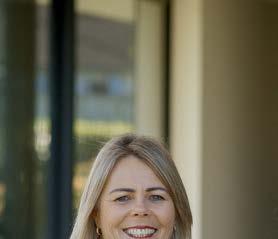
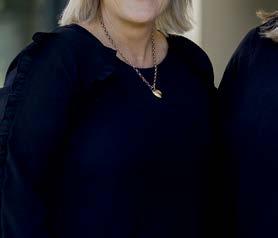



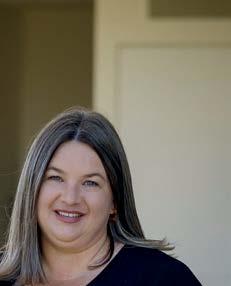
















STAGGERKNPDEEREAOR STRIDEJCEMOVEMENTY RHIROTATECOISKATEW OSXUMGSSAHASHIFTOE LHGALLOPSSBSEXWRTU LUPSPRINTMWCTBHATO DRRAMIBHIQNAKTLEVR TROTMRJLUUHYRUMIEE BYPSPBCLOAMKBMRTGV UIELDRLBLPQMUCTGGO DXLNYEOEOCALEORRDL GOUGGRKMPRPDTZOAAV EORREWIBEDJDDRNOWE BNADPHAPDNIYRLWZDL MHNGYIWWFAAVOAESLT CANTERCMEANDERGWEU WALKSLIDEQLCEZSALR STAMPEDEBJELELEYHN

Across: 1. Offer, 4. Waiver, 8. Cluster, 9. Enrol, 10. Scale, 11. Hatchet, 12. Oddity, 14. Mantle, 17. Against, 19. Smash, 21. Litre, 22. Admirer, 23. Screen, 24. Dance.
Down: 1. Occasionally, 2. Fauna, 3. Retreat, 4. Worthy, 5. Inept, 6. Earshot, 7. Clothes horse, 13. Drastic, 15. Assumed, 16. Strain, 18. Niece, 20. Apron.






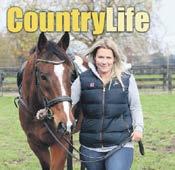










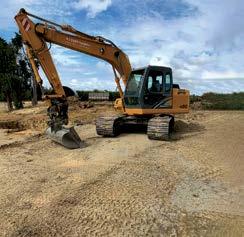




















ROOFING AND FENCING SHEETS



Corrugated &Five Rib Iron –
0.5mm:$16.95/m inclgst.

Ph: 027 223 2677
Email: sales@bitzandpiecez.co.nz
Corrugated Polycarbonate1.0mm:$16.95/m inclgst. 239 Kio KioStation Road, Otorohanga.
WEEKLY ADVERTISING DEADLINES







with Jan Bilton
Asian inspirations
The bold, diverse, fresh flavours and foods from China, Thailand, Japan, India and Vietnam continue to influence global cooking. And due to the high fibre, vitamin and mineral content plus the lower saturated fat, the dishes are popular with those who choose healthy, balanced diets.
Root ginger — a very common ingredient in most Asian cooking —contains gingerol, an anti-inflammatory and antioxidant that helps tame indigestion and nausea. Star anise, a dark brown, wood-like spice, is favoured in Chinese cooking. Each of its five petals encase a seed. Its robust liquorice flavour means only one or two are required to flavour a dish. It should perfume rather than overpower. Chinese five-spice is a pungent combination of ground cinnamon, star anise, fennel seeds, cloves and Szechwan peppercorns. It should be used in moderation. Add a little at the beginning of cooking as it can always be spiced up at the end or sprinkled over the finished dish.
Mirin — a sweet rice wine — is similar to sake but lower in alcohol. It’s common in Japanese cooking. The higher sugar content is formed naturally during fermentation. I love it in dressings and sauces.
Aromatic beef
Beef and vegetables at their best.
Beef: 1.5kg chuck steak
salt and pepper to taste
2 tablespoons coconut oil
1 red onion, diced
3 cloves garlic, diced
3 tablespoons finely chopped root ginger
Seasonings: 1 teaspoon Chinese five-spice powder
2 whole star anise
3 tablespoons fish sauce
Vegetables: 8-12 baby carrots
3 stalks celery, cut into 3cm pieces
400g can diced tomatoes in juice
1/2 cup beef stock
Garnish: 4 cups thinly sliced kale
1 tablespoon fresh lemon juice
chopped coriander
Preheat the oven to 160°C. Cut the steak into 3cm cubes. Season.
Heat the coconut oil in a large heavy casserole suitable for the hob and oven. Working in batches, brown the steak on














www.daverowe.co.nz







medium-high heat. Place aside.
Add the onion, garlic and ginger to the casserole and cook until golden. Stir in the seasonings. Add the carrots and celery, stir well, then add the tomatoes. Pour in the stock and add the chuck steak. Bring to a simmer. Cover and oven cook for 2 hours, until very tender.
Discard the star anise. Stir in the kale and lemon juice and cook for a few minutes until the kale wilts. Serve in bowls. Garnish with coriander and serve with rice. Serves 6-8.
Asian-flavoured pulled pork
1.3kg pork shoulder roast
1/2 cup each: firmly packed brown sugar, vegetable stock, balsamic vinegar
4 tablespoons hoisin sauce
3 cloves garlic, crushed
2 teaspoons finely grated root ginger
1 small onion, diced
1 tablespoon cornflour
2 tablespoons water
Place the pork in a slow cooker. Combine the brown sugar, stock, balsamic vinegar, hoisin sauce, garlic, root ginger and onion. Mix well. Pour over the pork. Cover and cook on low for 8 hours or until very tender. Remove the pork to a chopping board. Strain the liquid into a











saucepan. Add 6-8 ice cubes — the fat will cling to the cubes — then remove. Stir in the combined cornflour and water. Simmer, until thickened.
Using two forks, shred the pork into small pieces. Place in a bowl with the sauce. Serve between hamburger buns or sliders together with a tangy coleslaw. Serves 6.
Chicken, chinese cabbage & udon noodle soup
250g skinned and boned chicken
4 cups good chicken stock
1 tablespoon each: grated root ginger, soy sauce, mirin
1 teaspoon chilli paste
4 brown mushrooms, sliced
220g packet ‘cooked’ udon noodles
4-5 cups thickly sliced Chinese cabbage
1 cup mung bean sprouts
Cut the chicken into paper-thin slices.
Place the stock, ginger, soy sauce, mirin and chilli paste in a large saucepan and bring to the boil. Simmer for 10 minutes. Add the mushrooms. Simmer for 3-4 minutes. Place the noodles into boiling water briefly to heat through. Drain and place in four serving bowls.
Add the Chinese cabbage and bean sprouts to the stock. Simmer until just tender. Add the chicken and remove from the heat. The hot stock will cook the chicken. Ladle into the bowls and serve. Serves 4.
Aromatic beef
Asian-flavoured pulled pork

Farm
Work Wanted
Experienced farmer available for relief work, calving, milking, general farm work, GST registered Ph 022 0844349



WE’VE LOST our cockateel whose name is Keico last Monday. Yellow, grey, red markings on neck, if anyone has seen him or have found him, please Ph 021 355 306. Reward $300 if recovered.
WHITMORE, Brett William
John – 4th September 1941 – 13th June 2025. Passed away at Waikato Hospital, aged 83 years. Beloved husband of Margaret, Father to John & Andrew, Fatherin-law to Anna. Treasured Poppa to Simon and Heidi. Brother of Skip and Susan, Brother in-law to Alison and Lachie.
At rest.
FOSTER, Desmond John
– The Foster family would like to announce the passing of Des on 18th June 2025, aged 84. The private service was held on Saturday, 21st June. All communications to the Foster family, PO Box 137, Te Awamutu 3840.
Te Awamutu Funeral Services, FDANZ
MOLONY, Gwen Audrey
If you are an empathetic person with the “X” factor that all good care givers have and would like to join a committed caregiving team in a supportive work environment.


Andrew 0275 532 614





As per Brett’s wishes, a private service has been held. Messages to the Whitmore Family can be sent c/- 262 Ohaupo Road, Te Awamutu or in Brett's online tribute book at www. rosetown.co.nz





TE AWAMUTU CONTINUING EDUCATION
Wednesday 2nd July 2025 10am
Entry: $4 on arrival Waipa Workingman Club
Mid-Year Luncheon & Entertainment & Speaker: Raymond Richards Topic: Background to Current News Events.
Everybody Welcome More info phone 07 870 3223
PIRONGIA MARKET




Pirongia Community Centre, Crozier St Sunday, June 29, 9am - 1pm
Last Sunday of every month
Email jim1@xtra.co.nz or ph Jim 027 366 5842


Patricia – Passed away peacefully at Summerset Down the Lane on Saturday, June 21, 2025, aged 96 years. Loved mother and mother-in-law of Sandra and Stan Allen (Perth) and loved grandmother of Dwight and Scott and greatgrandmother of Hayley, Rohan, Carrington, Grayson, Matilda and Hazel. At Gwen’s request a private farewell has taken place. Messages to the Molony Family can be sent c/- 262 Ohaupo Road, Te Awamutu 3800.


Here when it matters most




and















1.5L Sprayer







to reduce the impact force of the falling chainsaw and prevent injury. $109.00 RRP







Extra comfort backpack harness with lumbar support. E cient. no-leak and easy repair. Genuine Viton® seals, and multiple nozzles including 25 PSI pressure regulator. Battery variant features a pressure regulator that delivers constant pressure to apply lawn chemicals with no pumping required! 18V battery provides up to 4 hours of spray duration on a single charge. Battery and charger included.

Throw weights
Constructed from 100% 1,000 denier Cordura fabric. Abrasion resistant. Improved durability with high tensile strength. Dual coloured pattern. Excellent visibility due to the bright orange. From $44.00 RRP


